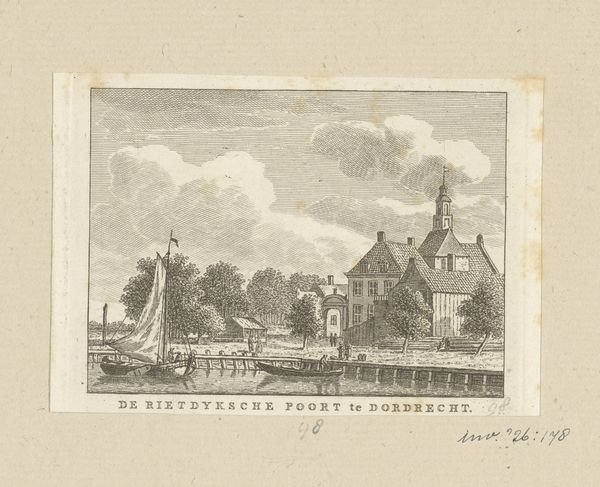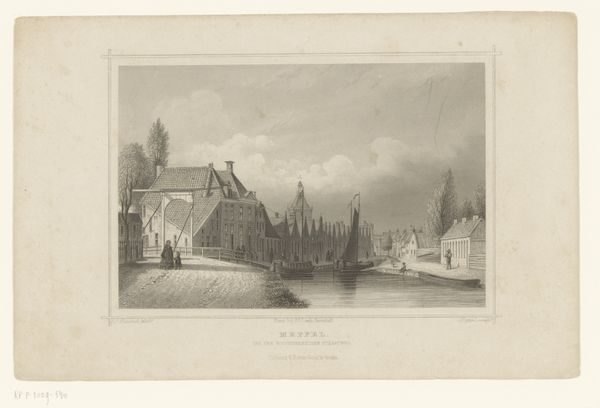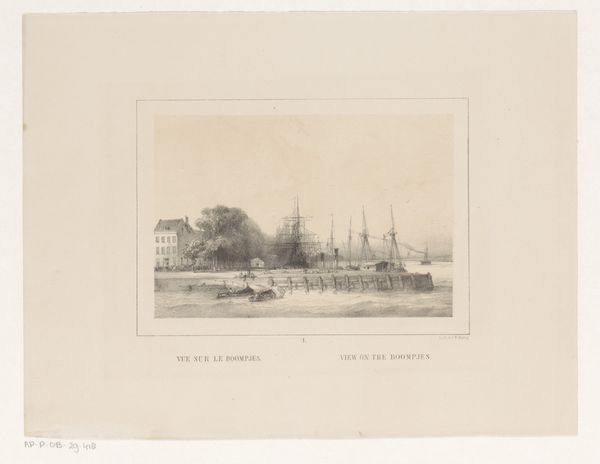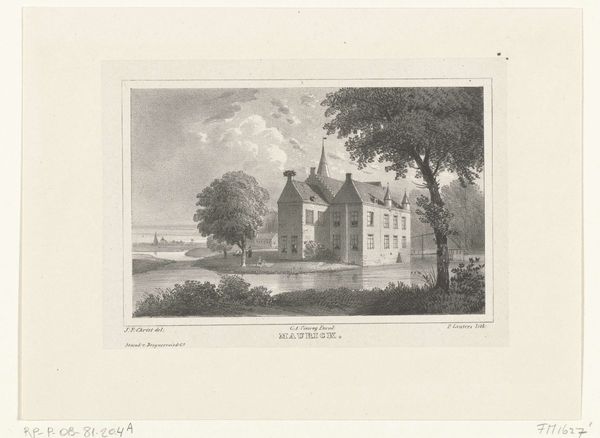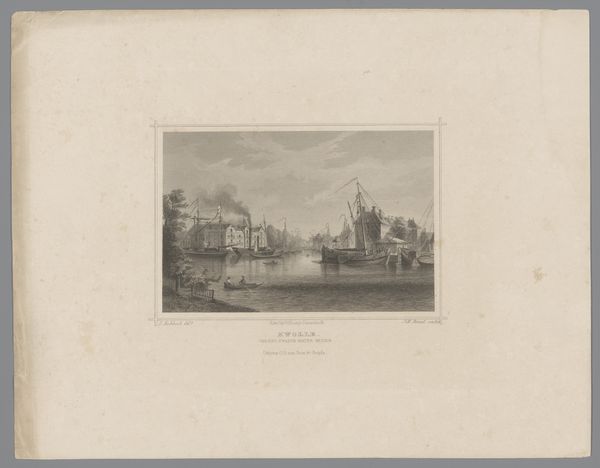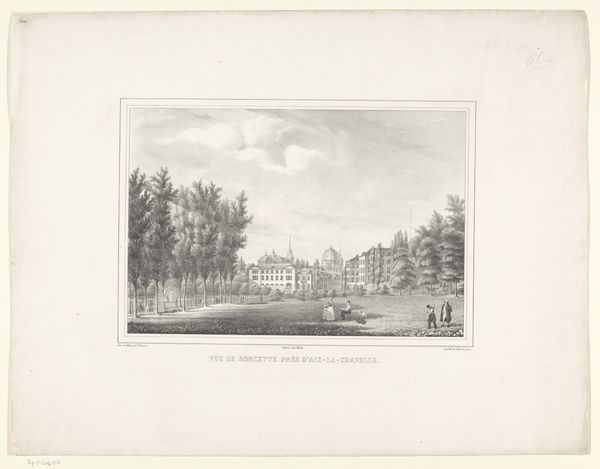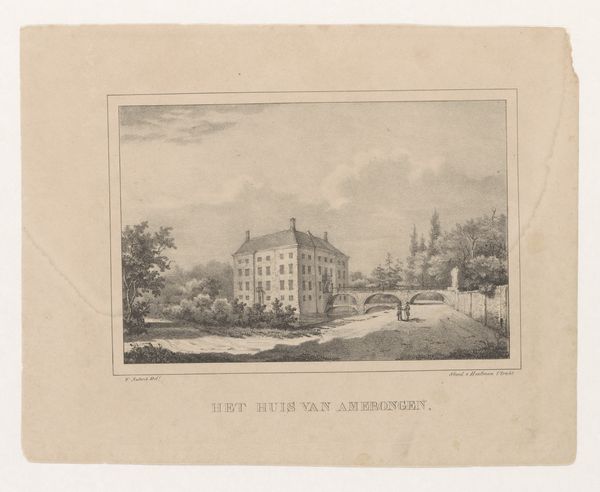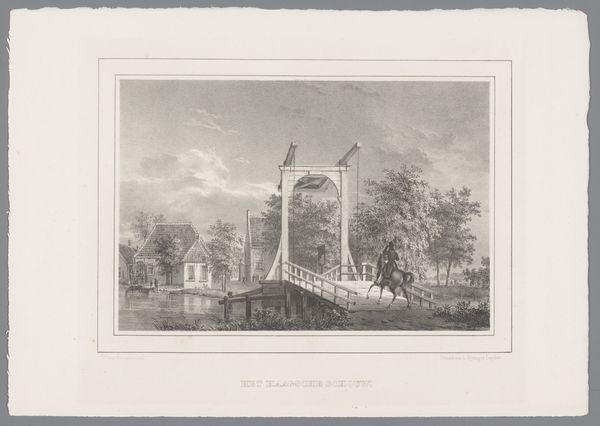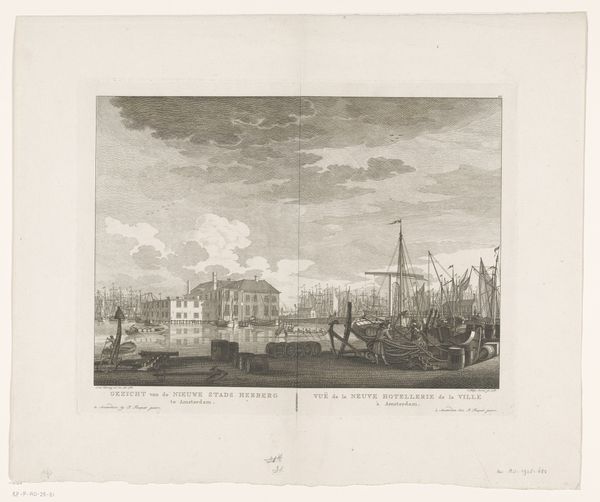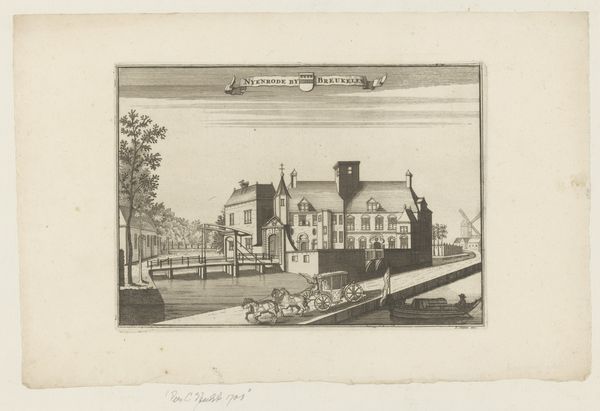
print, engraving
# print
#
landscape
#
romanticism
#
cityscape
#
engraving
#
realism
Dimensions: height 250 mm, width 325 mm
Copyright: Rijks Museum: Open Domain
Curator: Gazing at Antoine Franciscus Cornelis Hoffmann's "View of the Kamperpoort in Zwolle" from somewhere between 1832 and 1845… my first thought is, well, it’s remarkably tranquil! It’s all soft light and gentle lines, as if time slows down near this gate. Editor: That tranquility, I think, hides a lot. City gates in the 19th century were sites of intense social control—checkpoints not just for goods, but for people. Who got to enter, who was kept out? This image, created using print and engraving methods, is more about curated inclusion and exclusion, what is deemed worthy of picturesque portrayal. Curator: Ah, but don't you think the inclusion of that sailboat, almost casually docked, softens that edge? It speaks to trade and connection, not just restriction. And the windmill! Always a comforting sign of human ingenuity meeting nature. Editor: Comforting for whom, though? Mills were often owned by powerful landowners, reinforcing economic hierarchies. And the boat surely wasn't owned or sailed by everyone. We must question the idyllic narrative here and understand it reflects a certain perspective, likely a bourgeois one, idealizing control rather than challenging it. Curator: I concede your point, as the shadows are too sharp to fully hide from it. But let us dwell in the composition for a brief moment, how the eye is led from the water to the architecture, up towards that serene, albeit symbolically charged, windmill. There's undeniable artistry in constructing such a placid scene, don't you think? A visual lullaby of sorts. Editor: Lullabies can be deceptive. We must remember the communities excluded from these neat narratives. But indeed, analyzing this artistic rendering permits a conversation, opening an interesting angle from which we see social and historical patterns embedded into seemingly quaint cityscapes. Curator: Absolutely, what looked at first like a sweet, sleepy painting now becomes this compelling site of questioning. What a reminder: look closer, always, beneath that polished surface! Editor: Precisely. Our reflections on identity and context transform our viewing of Hoffman’s work—expanding the discourse on power dynamics depicted with artistic license.
Comments
No comments
Be the first to comment and join the conversation on the ultimate creative platform.
